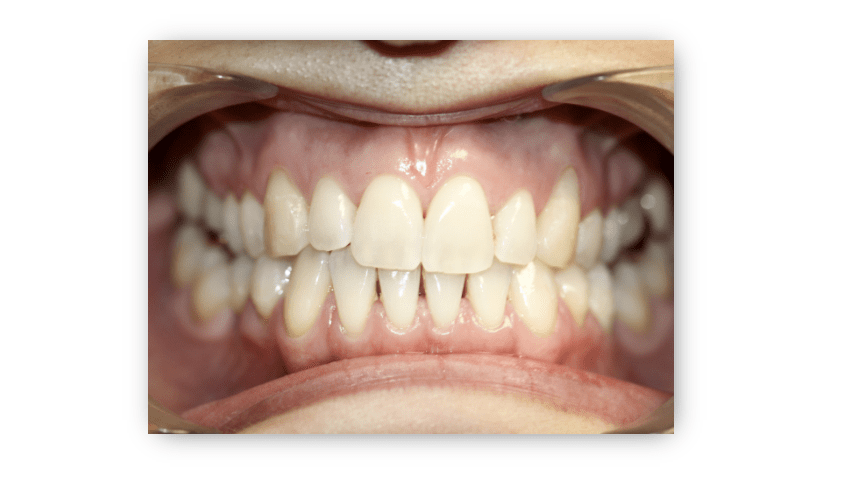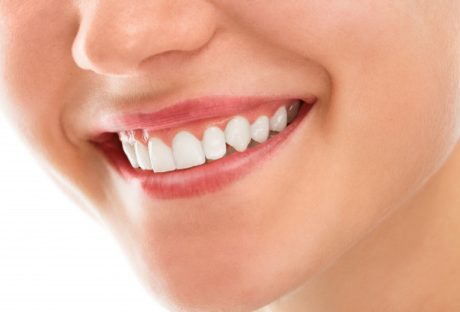Celebrities with bright smiles are now more popular than ever, which may lead people to start noticing their teeth’s cosmetic problems. Black triangle teeth are one of the most common dental problems people don’t address or pay attention to.
You can check for yourself if you have black triangles between your teeth. Smile with your teeth exposed in front of a mirror. If you can see any black areas between your gums and teeth, you have black triangle teeth or gingival embrasures.
They are initially harmless, but they can be dangerous if not treated immediately. It’s important to understand how they develop and what you can do to treat them.
What Are Black Triangle Teeth?
These black, triangle-shaped gaps between your gums and teeth are known as open gingival embrasures. They are usually associated with dental habits, age, and bone injury. They are also called black triangle teeth, which occur when your teeth and gums don’t fill the gaps between them.
Black triangles between teeth are a common problem; nearly 76% of adults over 20 have black spaces between their teeth, according to a study.
Food debris and plaque can accumulate in these gaps, making teeth susceptible to cavities and gum infections. The risk increases the more a person doesn’t practice good oral hygiene. Most want to fix them for cosmetic reasons and to keep their teeth and gums healthy.
What Causes Black Triangle Teeth?

It is important to see your dentist immediately to discuss how to treat this condition. They will use your dental history and the cause of your black triangle teeth as their guide in recommending treatments that best address it.
According to sunrise-dentistry.com, some of the reasons black triangle teeth occur are:
1. Receding Gums
Gum disease, infections, age, and smoking can lead to gum recession and thinness. Bacteria exposure and tooth decay can lead to cavities and other infections. Getting help immediately from a dentist is important if you find gaps between your teeth, regardless of their size.
2. Aggressive Dental Hygiene Techniques
Brushing or flossing too hard can damage the tissues between your teeth. Using a toothbrush with the right head size is also important; a toothbrush with a large head can make the gaps between your teeth larger.
3. Fragile Gum Tissue
Every person’s gum tissue thickness and stability are different. Experts believe that thinner gum tissues are less resistant to dental procedures. If you have fragile gum tissue, getting fullness back after dental implants will not be easy.
4. Teeth Shape
Apart from the gum thickness, each person’s tooth shape also differs. A person with triangular-shaped teeth is more likely to develop black gaps. Their teeth have wider biting surfaces than their bottom part near the gum line.
5. Mistakes During an Orthodontic Procedure
Black triangle teeth and other dental conditions can develop when an orthodontic procedure goes wrong. Small gaps can also form when teeth shift into new positions. You may need to repeat your dental treatment or visit a more reliable dentist.
How To Get Rid Of Black Spaces Between Your Teeth?
Now that it’s clear that the black gaps between your teeth are not just cosmetic issues, it’s best to learn how to eliminate them.
Consult your dentist before making any changes in your lifestyle or treatment for your dental health. They can help you understand the nature of your dental condition and determine the best approach to manage them.
According to the British Dental Journal’s study, patients have several treatment options for the black triangles between their teeth.
- Safe surgical techniques like pinhole surgery repair and tissue transplantation to preserve gums
- Tissue engineering, where dentists use regenerative cells to restore gum tissue
- Hyaluronic acid treatment to reduce black gaps between teeth and volumize gum tissues
- Using prosthetics made of composite or porcelain with a pink shade to bond teeth and conceal the appearance of black triangles between teeth
- Installing a removable gingival cover to close the triangle spaces between the teeth
- Repositioning or reshaping teeth to reduce or eliminate the black spaces between them
Proper Dental Hygiene and Black Triangle Teeth
Brushing and flossing your teeth every day will help prevent gum disease, blackening of your teeth, and other serious conditions. Routine dental checks help you know how your lifestyle choices impact your dental health and help your dentist check for early signs of dental problems.
The American Dental Association has developed guidelines for how to brush your teeth and perform interdental cleaning. They also recommend using a toothbrush with soft bristles.
Key Takeaway
The black triangles between your teeth are more than just a cosmetic problem. They are caused by oral health problems like receding gums, aggressive oral hygiene techniques, and fragile gum tissue. Mistakes during an orthodontic procedure and the shape of your teeth may also cause black triangles between your teeth.
You should consult your dentist about them; they are the best people suited to help you determine the best course of action to take. They can also address the dental problems causing the black triangles between your teeth.
Additionals:






















